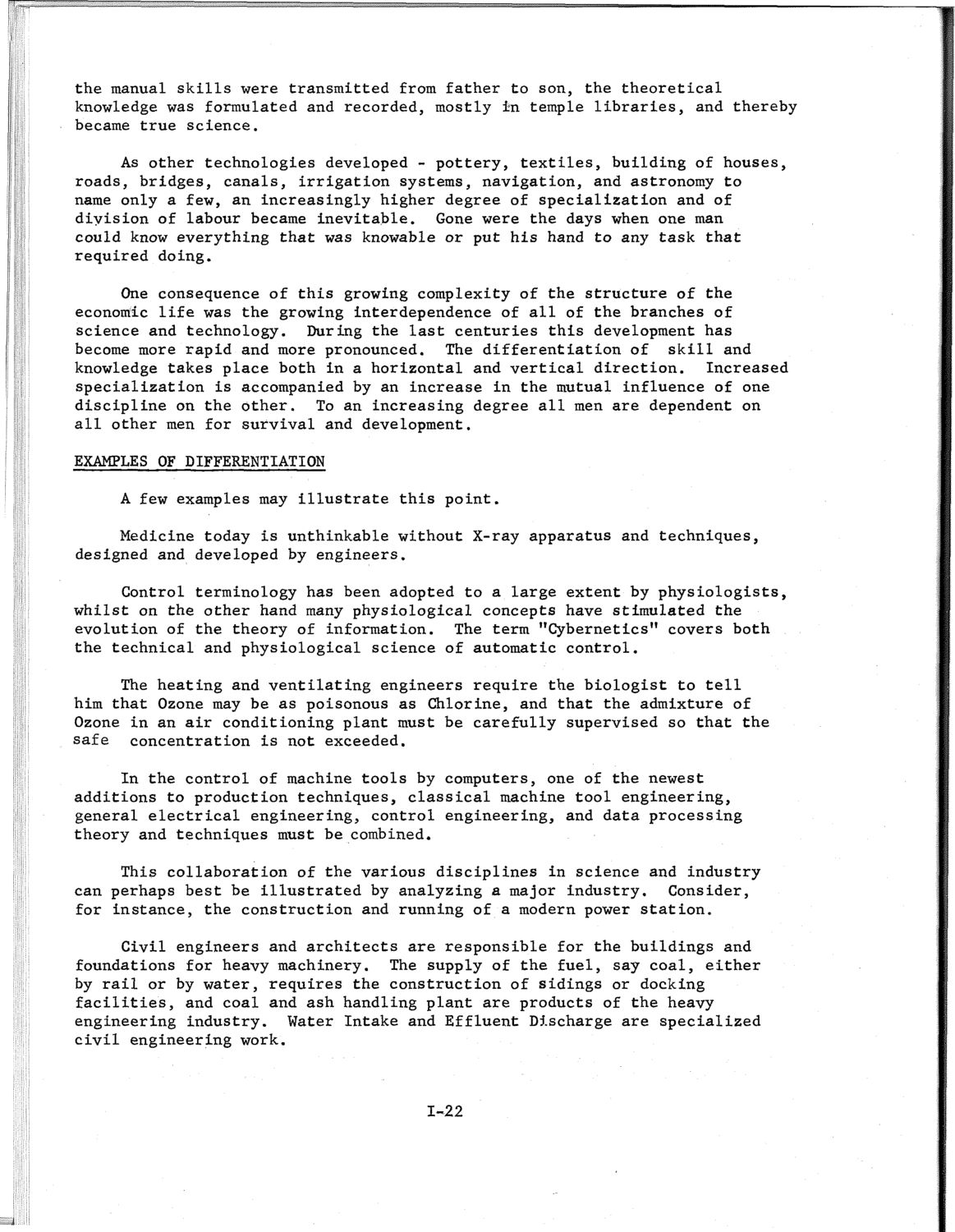| |
| |
Caption: SWE - Proceedings of the First International Conference of Women Engineers and Scientists
This is a reduced-resolution page image for fast online browsing.

EXTRACTED TEXT FROM PAGE:
the manual skills were transmitted from father to son, the theoretical knowledge was formulated and recorded, mostly in temple libraries, and thereby became true science. As other technologies developed - pottery, textiles, building of houses, roads, bridges, canals, irrigation systems, navigation, and astronomy to name only a few, an increasingly higher degree of specialization and of division of labour became inevitable. Gone were the days when one man could know everything that was knowable or put his hand to any task that required doing. One consequence of this growing complexity of the structure of the economic life was the growing interdependence of all of the branches of science and technology. During the last centuries this development has become more rapid and more pronounced. The differentiation of skill and knowledge takes place both in a horizontal and vertical direction. Increased specialization is accompanied by an increase in the mutual influence of one discipline on the other. To an increasing degree all men are dependent on all other men for survival and development. EXAMPLES OF DIFFERENTIATION A few examples may illustrate this point. Medicine today is unthinkable without X-ray apparatus and techniques, designed and developed by engineers. Control terminology has been adopted to a large extent by physiologists, whilst on the other hand many physiological concepts have stimulated the evolution of the theory of information. The term "Cybernetics" covers both the technical and physiological science of automatic control. The heating and ventilating engineers require the biologist to tell him that Ozone may be as poisonous as Chlorine, and that the admixture of Ozone in an air conditioning plant must be carefully supervised so that the safe concentration is not exceeded. In the control of machine tools by computers, one of the newest additions to production techniques, classical machine tool engineering, general electrical engineering, control engineering, and data processing theory and techniques must be combined. This collaboration of the various disciplines in science and industry can perhaps best be illustrated by analyzing a major industry. Consider, for instance, the construction and running of a modern power station. Civil engineers and architects are responsible for the buildings and foundations for heavy machinery. The supply of the fuel, say coal, either by rail or by water, requires the construction of sidings or docking facilities, and coal and ash handling plant are products of the heavy engineering industry. Water Intake and Effluent Discharge are specialized civil engineering work. 1-22
| |